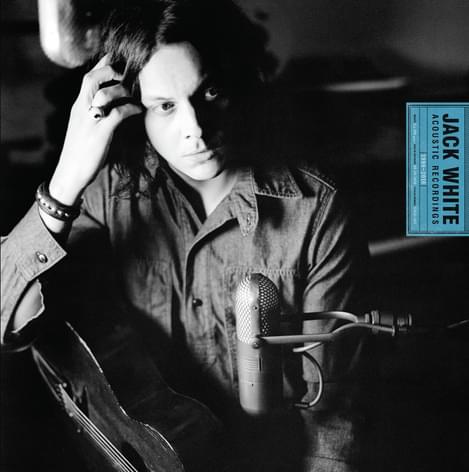Jack White's acoustic work is a snapshot of music’s transition from one era to the next
"Acoustic Recordings 1998 - 2016"

While each project White has been involved with – the White Stripes, the Raconteurs, the Dead Weather, and his current solo output – has succeeded in their own right, as an artist Jack has continuously seemed to be in restless, impatient state of transformation, anxious to launch his next endeavor before his current work grows stale. That has lead to some curious and unconventional experiments – both in White’s music itself, and the way that it’s meant to be consumed.
Those peculiarities – records that play different songs when played at different speeds, songs hidden in the inner label of a 12-inch, ghostly holograms that appear magically while the album spins, a damn record that can be played in outer space – have pushed White to find new ways of challenging himself as an artist, as well as redefining the very means of how music can be shared and enjoyed.
But without White’s impressive back catalog filled with striking material, fans would have grown tired of his antics a long time ago, and embraced music that doesn’t require you to drop a needle in precisely the right groove in order to hear it. On his new, career-spanning collection, Jack White Acoustic Recordings 1998-2016, those songs are showcased in their purest form, without the bombast and raw electricity found in White’s amplified work. And what emerges over the course of these two albums are a series of vulnerable, tender numbers that highlight how talented a songwriter White truly is – a trait that gets lost amidst the critical commotion surrounding his increasingly eccentric creative pursuits.
The collection is arranged chronologically, with the uncluttered, sympathetic emotions of early White Stripes songs (a slightly remixed version of "Apple Blossom" alongside the flawless gems "Hotel Yorba" and "You’ve Got Her In Your Pocket") giving way to White’s soundtrack and commercial work ("Never Far Away" from Cold Mountain, and "Love is the Truth", which was featured in a 2006 Coca-Cola advert), before closing the set out with an impressive array of solo material that illustrates Jack’s substantial growth as a songwriter over the years.
The simple poignancy of White’s initial work gradually matures into expansive, Dylan-like fables where there is far more at stake for the protagonist than merely making new friends at school. Although the unbridled joy of White’s early work is replaced by a reflective self-seriousness in later years that occasionally weighs down the material, the songs still manage to bloom in their own unique way, while fitting seamlessly alongside White’s best work.
The track from the collection garnering a majority of the attention is "City Lights", billed as an unreleased White Stripes song from the Get Behind Me Satan sessions. While any contributions from Meg White are muted at best, the jaunty number blends the unabashed pop appeal of Simon and Garfunkel’s "Feelin’ Groovy" and the Association’s "Windy" into a wistful folk confection that illuminates the refined, tranquil direction White would take with his solo career.
In recent years, White has shifted much of his creative focus from his individual work towards putting out inventive releases from his label, Third Man Records. Bands and artists that inspire him are routinely brought in for performances or recording sessions, and White proudly continues to shape the direction of modern music with Third Man’s string of impressive releases. But when White does allow himself to take a long look back instead of constantly looking forward – which is essentially what this new collection represents – the work that helped make his name still stands proudly as a snapshot of music’s inspired transition from one century to the next, as well as a determined link from that antiquated era to whatever comes after.
Get the Best Fit take on the week in music direct to your inbox every Friday

Lorde
Virgin

OSKA
Refined Believer

Tropical F*ck Storm
Fairyland Codex





